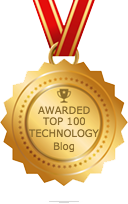Understanding Drones: Components and Applications
Drones have become common these days for monitoring purpose or for handling with dangerous substances.
A drone, in technological terms, is an unmanned aircraft this means that it doesn’t need an on-board pilot to fly. Drones are more formally known as Unmanned Aerial Vehicles (UAVs) or Unmanned Aircraft Systems (UASs). Essentially, a drone is a flying robot that can be remotely controlled or fly autonomously through software- predefined flight routes with the help of onboard sensors and GPS.
One of the most common and popular flying drone designs is the quadcopter, which is a type of drone that is lifted and propelled by four rotors. Quadcopters today, are very easy to fly in any direction. They can also hover or fly in any direction, lift or descend through remote controller stick.
Let’s dive into more details of hardware of drones, types of drones, how exactly does it work and fly.
Classification of Drones
Drones can be classified based on their different types and sizes as shown below. The largest drones are used for military purposes. Some military drones can be as large as a Boeing plane. The second-largest drones are unmanned air crafts. These are used in a wide range of industries and are preferable for their ability to cover large areas such drones are often used for geographical surveying.
The most common consumer drones, which are also the smallest, are classified as VTOL (Vertical Take-Off and Landing) drones. They are small enough to be carried by hands and are mostly used by consumers for personal and commercial purposes.
Components of Drones
The core components used for construction of a quadcopter are the frame, propellers and the electric motors. It also contains a large number of technological components as shown in the below figure:
- Frame/Chassis: Every quadcopter needs a frame to integrate all the components together. Things to consider here are weight, size, and materials.
- Propellers: Propellers are blades which when rotated generate thrust by pushing the air downwards. These are specified based on diameter and pitch. A quadcopter has four propellers, two propellers that spin counter-clockwise, and two propellers that spin clockwise.
source:www.rcdronegood.com
- ESC: The electronic speed control or ESC tells the motors how fast to spin at any given time.
- Motors: Motors are the primary force behind how quadcopters fly. Drone’s motors are rated in “Kv” units which indicates how many revolutions per minute(RPMs) it can achieve if provided with voltage of 1 volt under no load.
- Camera: The Raspberry Pi camera module is used to capture high-definition video, as well as still photographs. It is easy to integrate the camera module to the Raspberry Pi.
- Flight Control: It is regarded as the brain of the quadcopter. It is a circuit board which serves as a basic sensory system that detects the orientation of drone and receives user’s commands and controls to the motors.
- Receiver-Transmitter: These are used to control the drones by giving a command signal. The receiver placed on drone receives the signal and transmitter transmits the signal.
- Battery: These are portable power units which store electric energy and provide them when load is applied lithium polymer battery is favorable due to its light weight characteristics.
- IMU: The IMU (Inertia Measurement Unit) is an electronic sensor device which measures the velocity, orientation and acceleration along different directions. This sensor allows the control system to navigate the bot in the environment.
How Do Drones Fly?
To understand the specifics of a drone’s working, we need to know some basic terminologies used for a flight i.e. Pitch, Roll, and Yaw.
-
Altitude of Drones
When we talk about altitude we have 3 components: Roll, Pitch and Yaw. The easiest way to understand what we mean by altitude is to consider a drone with three linear axes running through it.
-
Rotor Direction
The drone is a quadcopter which has 4 rotors that are all connected to individual motors. Motors on one diagonal rotate in the clockwise direction and on the other rotate in the anti-clockwise direction.The two opposite rotations balance out and keep the drone steady.The quadcopter’s movement is controlled by varying the relative thrusts of each of the 4 rotors.
-
Throttle Control
Take-off (Move Up) is movement of quadcopter that lifts up from ground to hover position and vice versa for landing (Move Down) position. It is controlled by increasing or decreasing speed of four rotors simultaneously.
-
Pitch Control
To move forward we reduce the power in the front motor. This tilts the quadcopter forward and the rotors provide sufficient thrust to move forward. Conversely, to move backwards we reduce the power in the back rotor, tilting the quadcopter backward.
-
Roll Control
Bend left and right motion of quadcopter is controlled by changing the roll angle. Rotate left and right motion of quadcopter is controlled by changing the yaw angle.
source:https://www.researchgate.net/publication/304154755_Combined_Control_Strategies_for_Controlling_the_Trajectory_of_a_Quadcopter
Source: www.dronenodes.com
Applications of Drones
There are unlimited applications of drones in almost all the industries. Some of the interesting applications are:
- Field crops Automatic pollination
- Search and rescue operations
- Traffic and Crowd monitoring
- Hazardous sites exploration
- Weather and climatic mapping
- Power lines and pipelines inspection
- Wildlife counting
- Erosion and earth movement(landslip) monitoring
- Solar panel and Wind Turbine inspection
- Grid installation and inspection
- Firefighting and rescue


























It is nicely described. I loved this article.
Very informative blog..
Nice article very informative
Nice Explanation, Eric.
to get information about the usage of Drone and its application.👌
Very detailed information .😊 I didn’t know this much about drones. And that roll , yaw and pitch😅😅 . Keep it up Eric 👍